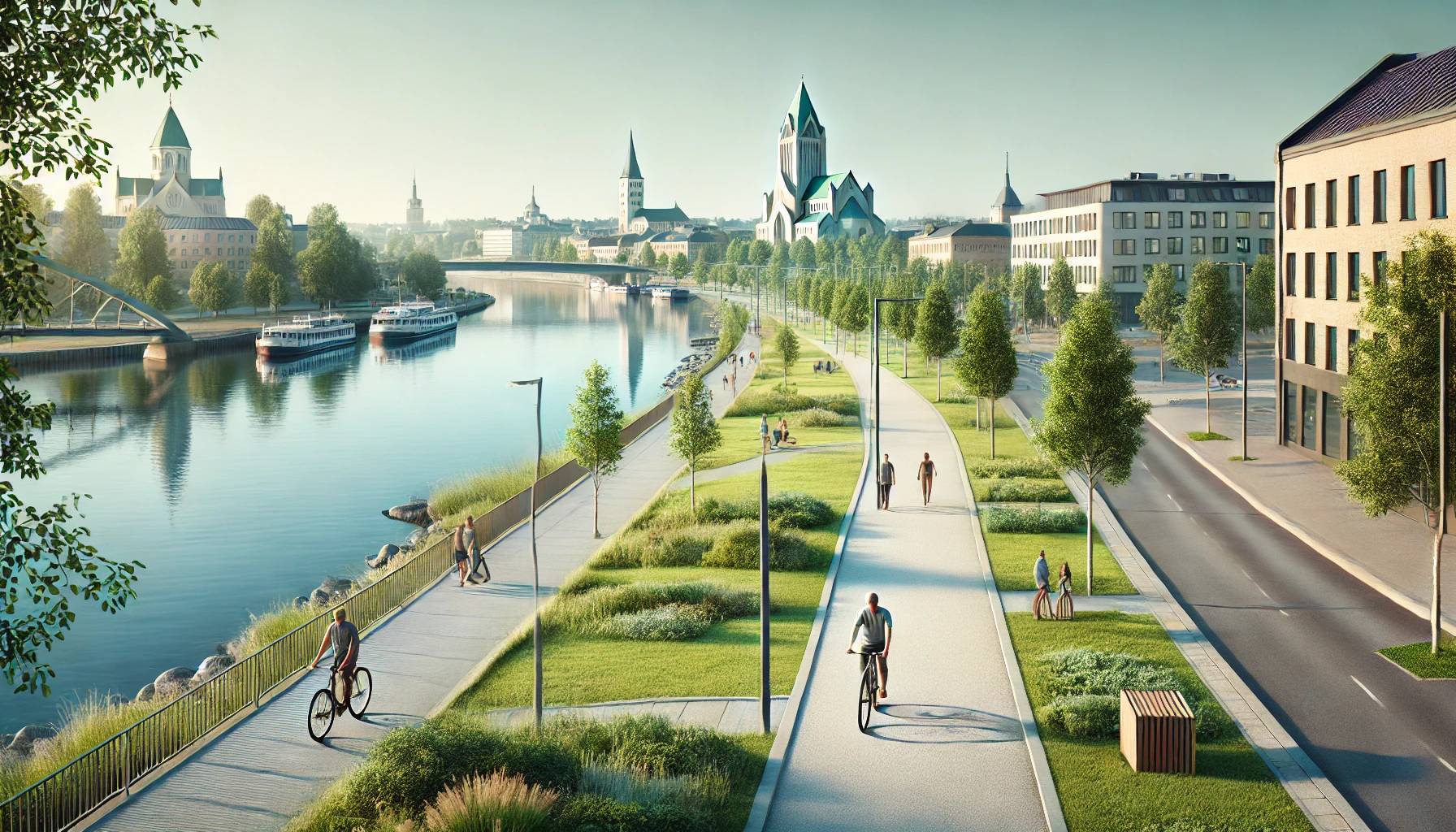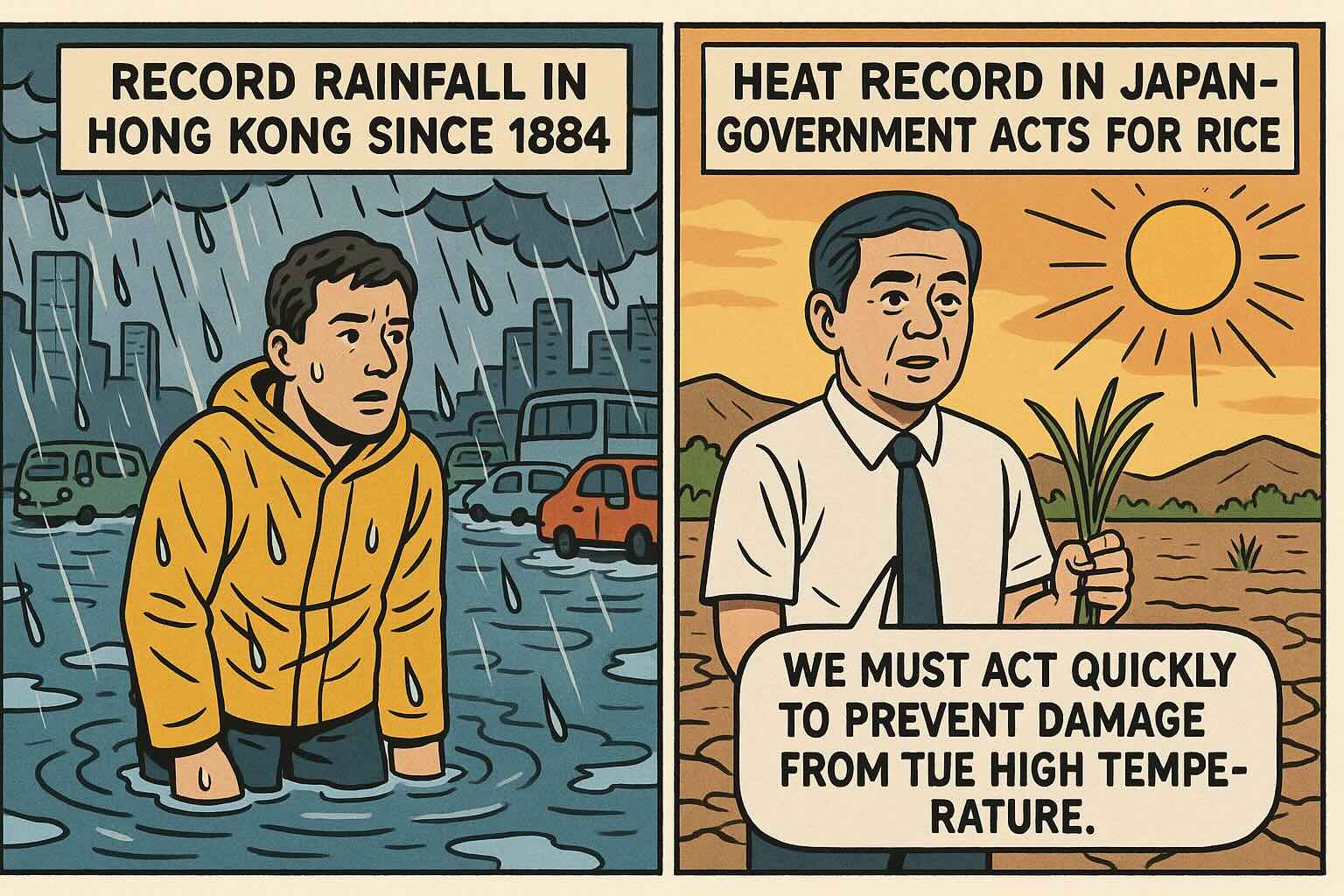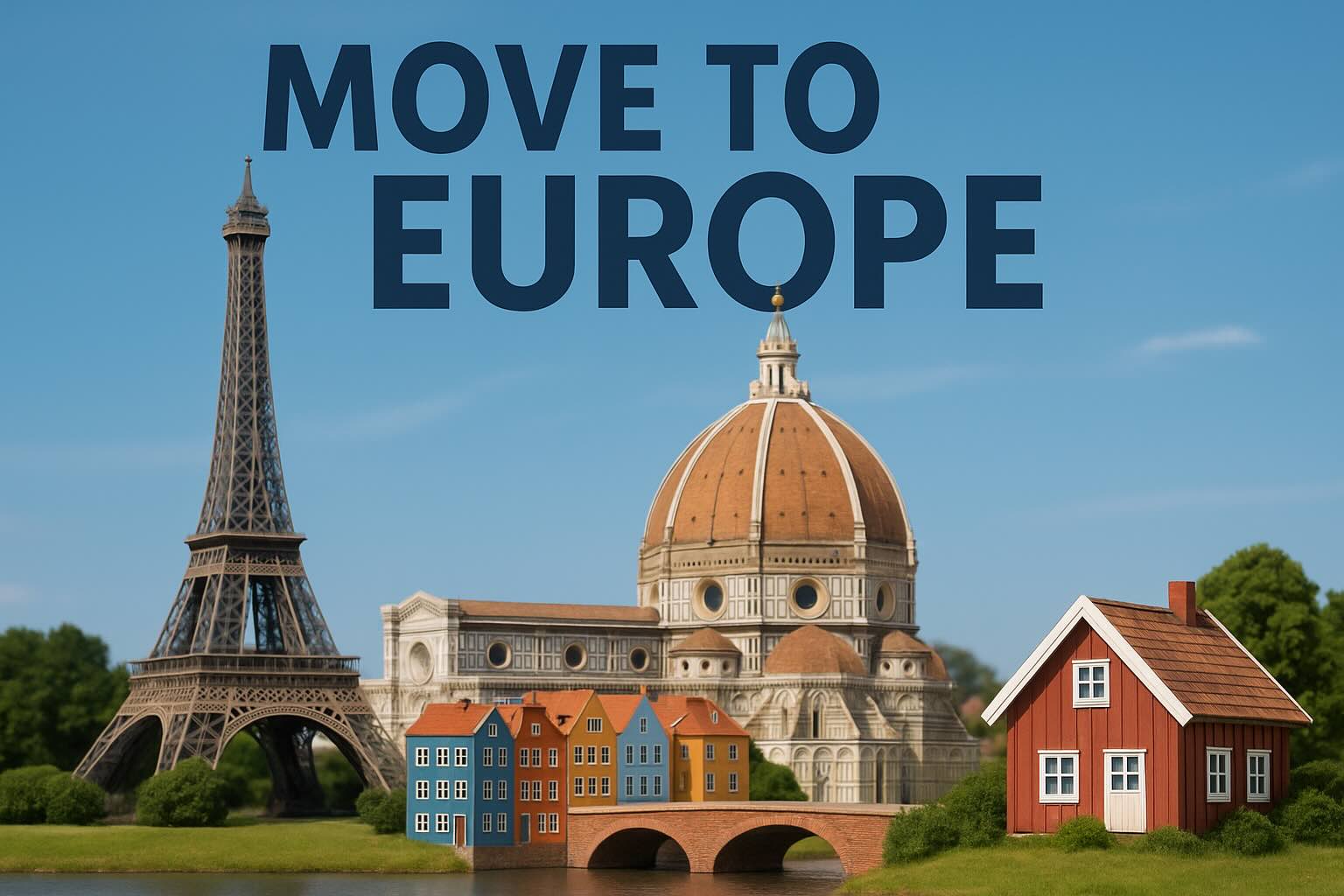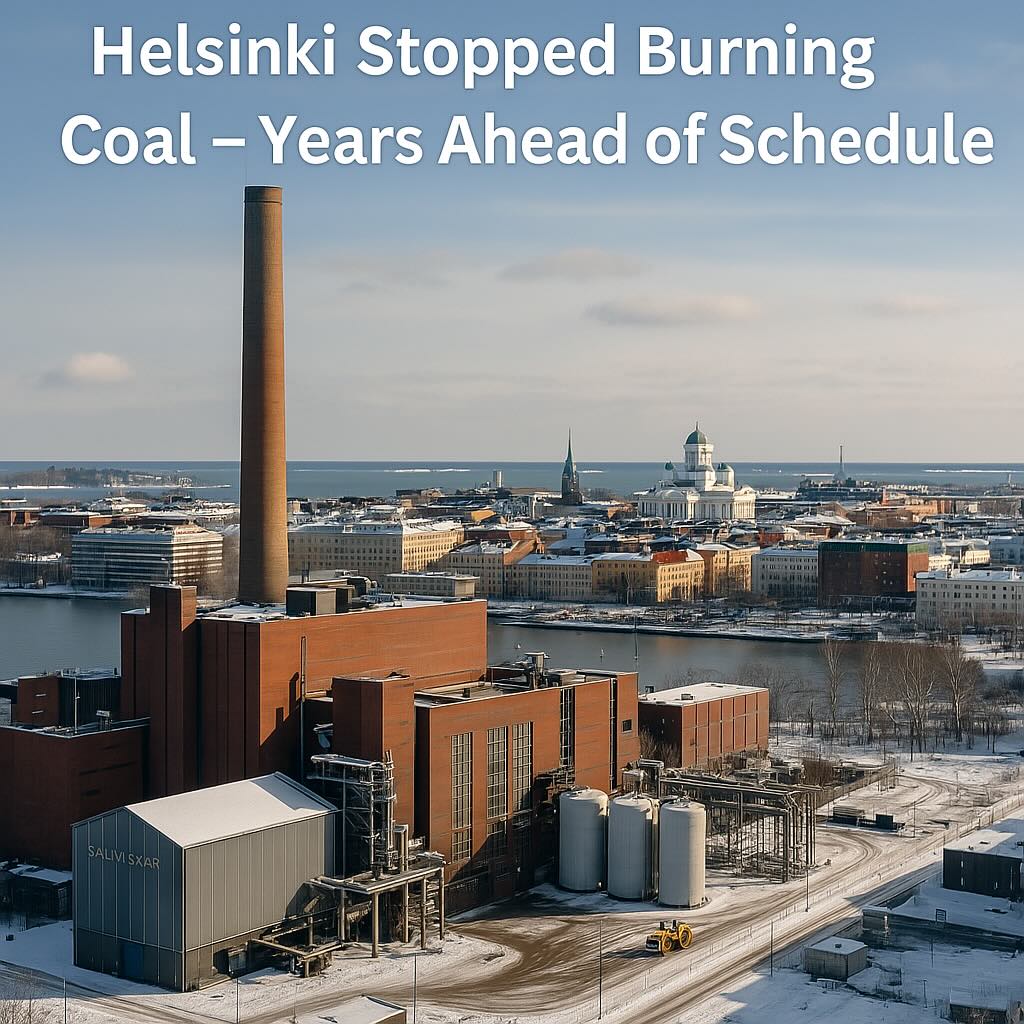
Turku, the oldest city in Finland, is leading the way in sustainable urban planning with a goal to be carbon neutral by 2029. As a city with a rich history, Turku has developed modern strategies that not only make life better for its residents but also protect the environment. The city’s main focus is on improving green spaces, using renewable energy, making transportation more eco-friendly, and reducing waste. Additionally, Turku has a strong emphasis on educating its citizens about sustainability and involving them in the process. These efforts provide great examples for other cities that want to follow a similar path, demonstrating that sustainable urban growth is both achievable and beneficial.
Turku works hard to increase the amount of green spaces in the city, such as parks and gardens, to support wildlife, handle rainwater, and improve air quality. The city uses something called the Blue-Green Factor tool to help measure and boost the amount of greenery in both public and private areas. This not only helps reduce problems like flooding but also makes the city more pleasant to live in. Turku has also introduced green roofs and walls, which are covered with plants, to clean the air and provide homes for insects like bees.
In addition to parks, Turku has started projects to restore rivers and wetlands. These areas don’t just look beautiful—they also help nature thrive and offer places for people to relax and enjoy the outdoors. By balancing city growth with natural spaces, Turku has become a role model for how cities can stay green while still developing. The city also organises community gardening initiatives, where residents can grow their own vegetables and flowers, promoting healthier lifestyles and stronger community ties.
Efforts to preserve green areas also extend to protecting forests around the city. Turku collaborates with environmental organisations to maintain nearby natural habitats, ensuring that wildlife continues to flourish alongside urban expansion. This holistic approach to urban greenery reflects a deep understanding of how nature and human development can coexist.
One of Turku’s top goals is to move away from using fossil fuels and instead rely on clean energy sources like solar, wind, and water. By 2022, about 78% of the energy used to heat buildings in Turku came from renewable sources. The city has also worked with local companies and universities to come up with new ways to produce and use energy more efficiently. These partnerships have led to innovations in energy storage and distribution, further improving the city’s sustainability.
Turku encourages people to save energy at home and at work. There are programmes that offer support for adding solar panels, improving insulation, and using smart devices to control energy use. Thanks to these efforts, the city has been able to lower overall energy consumption, helping both the environment and people’s wallets. Schools and community centres often hold workshops on energy-saving techniques, ensuring that everyone can contribute to reducing energy use.
Public buildings in Turku are also being upgraded with energy-efficient technologies. Many have installed smart heating systems that adjust based on occupancy and weather conditions, reducing waste. The city is also piloting projects to generate renewable energy locally, such as installing solar panels on school rooftops and public facilities.
Turku is making it easier for people to get around in ways that don’t harm the environment. The city is working on a plan for 2025–2029 that includes bringing back trams to reduce the number of cars on the road. This will be in addition to improving bus services and building more bike lanes. By offering convenient and eco-friendly alternatives to driving, Turku hopes to encourage more people to leave their cars at home.
The city has already added electric and hybrid buses to its fleet, which helps reduce pollution and noise. It’s also installing charging stations for electric cars and promoting car-sharing services, so fewer people need to own a car. With these steps, Turku aims to cut down on car traffic and make eco-friendly travel an easy choice for everyone. Bike-sharing programmes have also become popular, giving people an affordable and sustainable way to travel short distances.
Additionally, Turku promotes walking by making streets more pedestrian-friendly. Sidewalks are widened, and green corridors connect different parts of the city, making it pleasant to walk or cycle. The city’s commitment to sustainable mobility is reflected in its annual mobility week, during which various events and campaigns encourage residents to try alternative forms of transport.
Turku is working hard to reduce waste and make better use of resources. This is part of the city’s plan to fight climate change and create a more sustainable future. The city encourages residents to recycle more and repair old items instead of throwing them away. There are even places where people can learn how to fix things, like electronics and clothes. Special collection points for hazardous waste, such as batteries and old appliances, have also been set up throughout the city.
Turku also teams up with local businesses to create new products from leftover materials. For example, food waste can be turned into compost, and scrap wood can be reused in construction. By thinking carefully about how resources are used, the city helps prevent waste and supports a circular economy, where materials are reused as much as possible. The city has launched several awareness campaigns to educate people about the importance of reducing waste, including school programmes that teach students how to recycle and compost.
The local government has also introduced policies to encourage businesses to adopt circular practices. Companies are rewarded for reducing their environmental footprint, and some have created innovative products by repurposing materials that would otherwise go to waste. This not only helps the environment but also boosts the local economy by creating new job opportunities.
Turku’s success in becoming more sustainable is partly due to how well it involves the local community. The city regularly holds events and meetings where residents can share their ideas and give feedback on new projects. This helps ensure that changes in the city benefit everyone. Residents are also encouraged to join volunteer programmes that support environmental initiatives, such as tree planting and clean-up drives.
One example is participatory budgeting, where people vote on how some of the city’s money should be spent. Turku also works closely with schools and universities to involve young people in sustainability projects, helping them learn how to take care of the environment and shape the future of their city. Local artists are often invited to create public artworks that highlight environmental themes, raising awareness about sustainability in creative ways.
The city also runs an annual sustainability fair, where businesses, non-profits, and residents can showcase their eco-friendly projects. This event fosters a sense of community and inspires others to adopt greener practices. By involving people of all ages, Turku ensures that its sustainability efforts have widespread support.
Turku’s efforts to create a greener, cleaner, and more sustainable city offer valuable lessons for other cities around the world. By focusing on green spaces, renewable energy, eco-friendly transport, and waste reduction, Turku shows that cities can grow and improve without harming the planet. Its goal to be carbon neutral by 2029 proves that with careful planning and community involvement, a sustainable future is possible. Other cities can learn from Turku’s example and take steps towards creating healthier, happier places to live.
Moreover, Turku’s approach highlights the importance of collaboration between the government, businesses, and the community. By working together, cities can tackle even the toughest environmental challenges. As more cities adopt similar strategies, the vision of a sustainable world becomes increasingly achievable.
Author
Michael Mammela is a contributor to BestCityIndex with expertise in urban development and global city trends.
Stay updated with our latest insights and city rankings.

Introduction:The aroma of aged wheels, bubbling fondue, and freshly baked bread for cheese lovers, Europe is a true paradise. Here are five cities where cheese...

Date: 5 August 2025Source: AFP, Reuters, Local Weather AuthoritiesReading Time: 3 minutesIntroductionIn just one week, Asia has faced two stark climate...

Moving to Europe: Pros and Cons by Country for Work, Retirement, Education & Lifestyle Part 1.Moving from the United States to Europe is an exciting...



